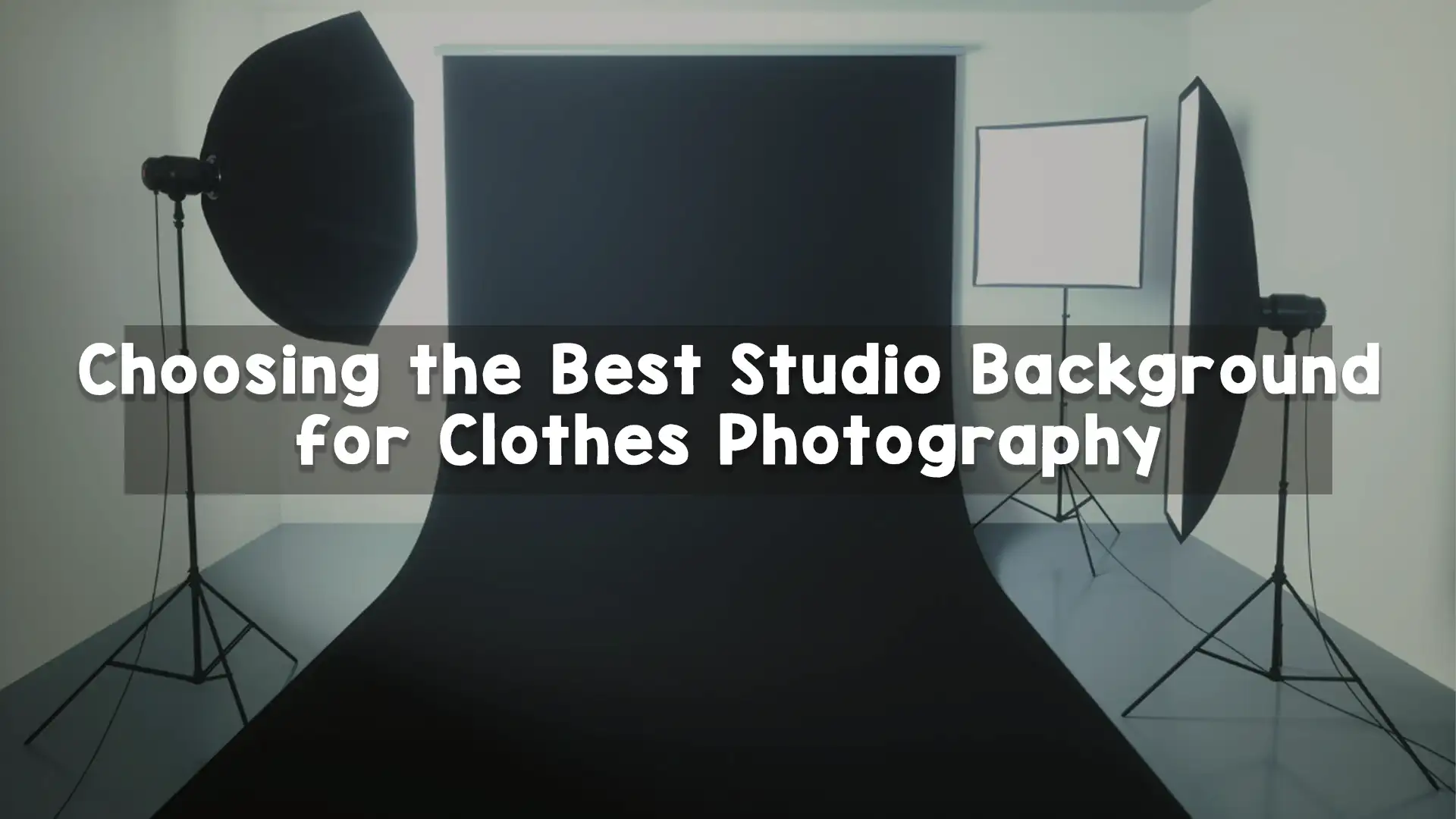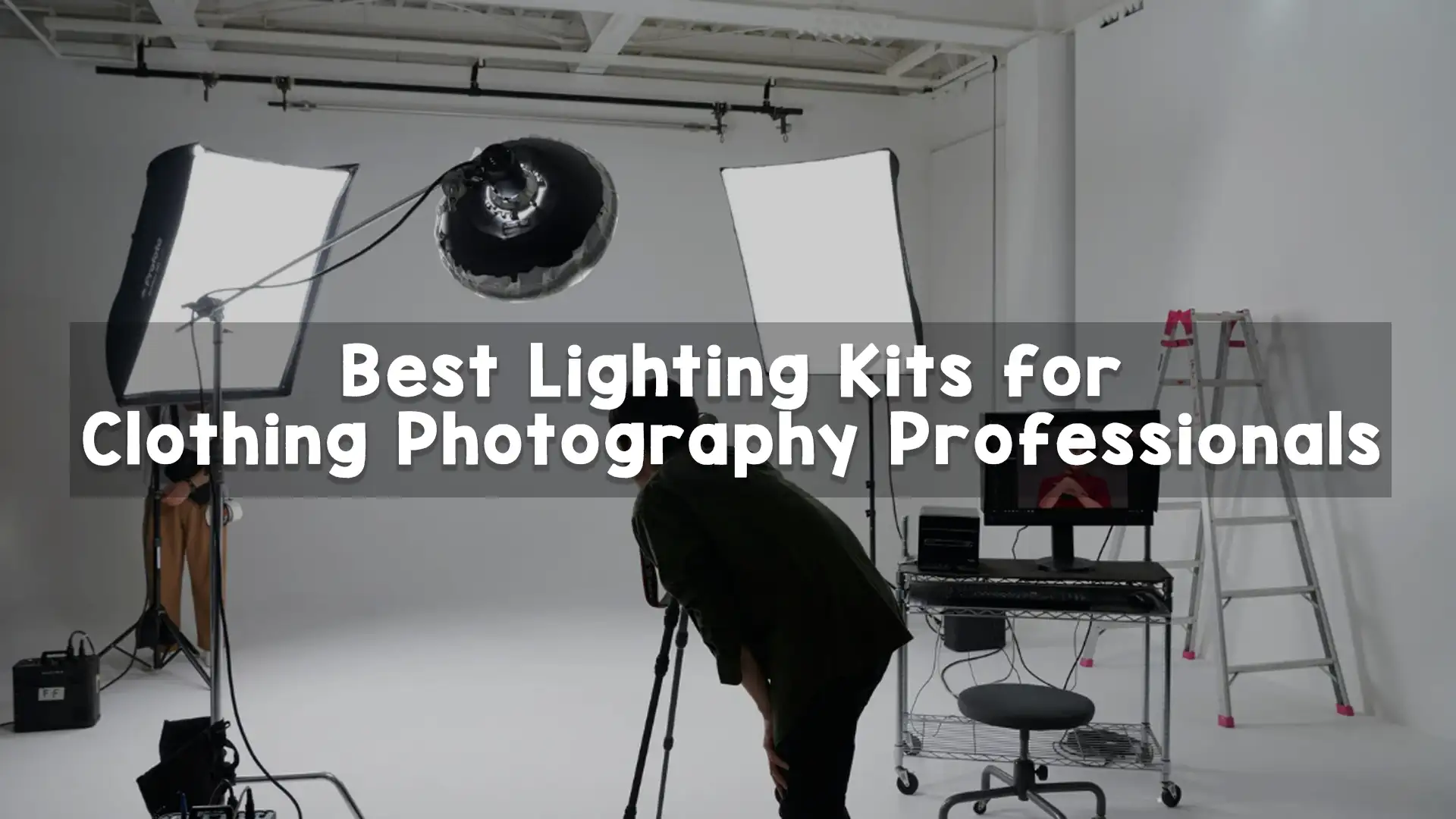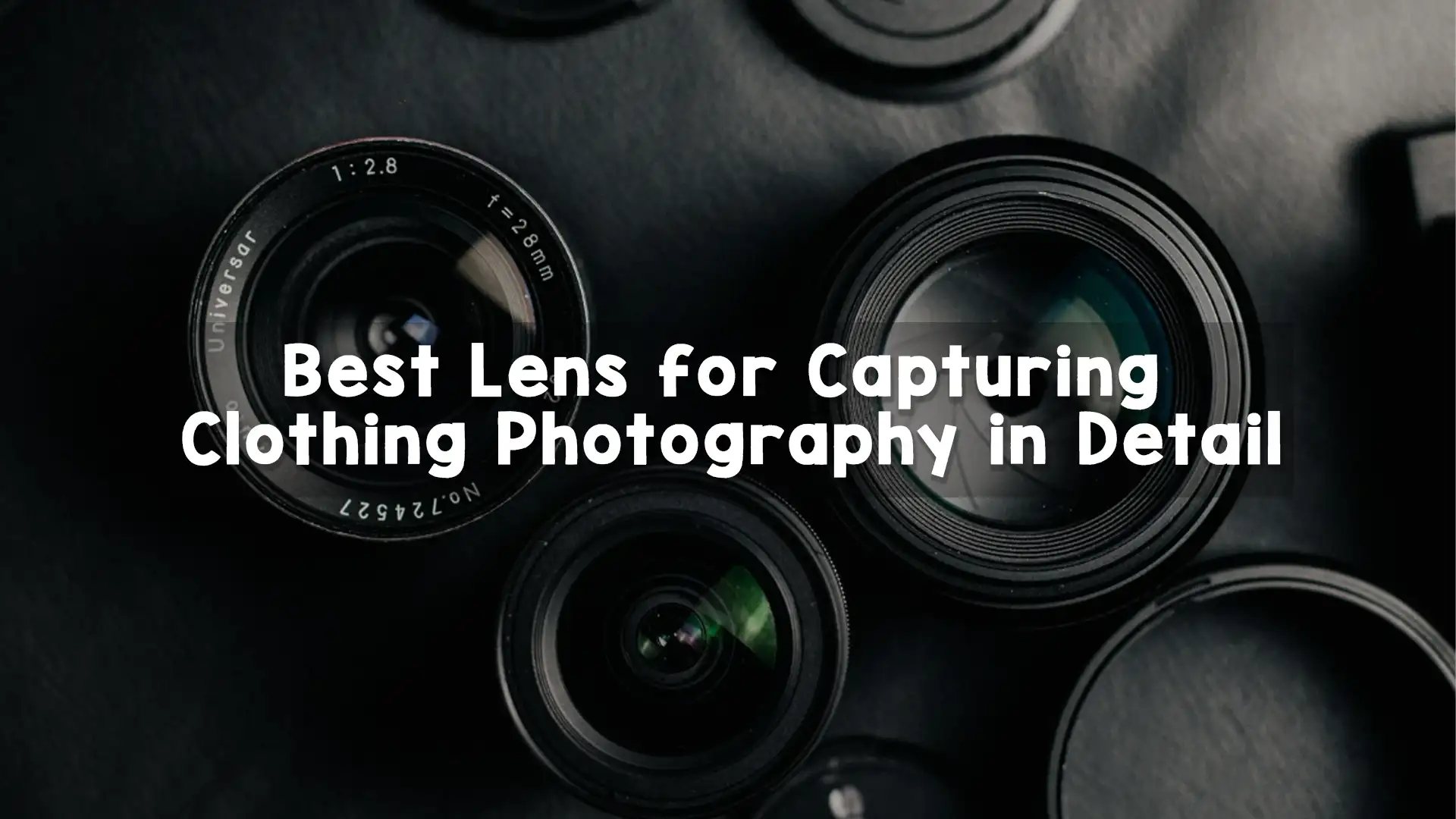When it comes to presenting fashion online, the visual appeal of your photos can make or break a sale. Whether you’re an established fashion brand or a small online boutique, showcasing clothing in the best possible way is critical. One key element that significantly affects the outcome of your product images is the studio background for clothes photography. The background not only highlights your clothing but also sets the tone for your brand image.
In this article, we will guide you through how to choose the best studio background for clothes photography, why it matters, and how it can influence customer behavior. We’ll also explain different types of backgrounds, how lighting interacts with them, and how editing and post-production services, like the ones offered by Image Work India, can enhance your final results.
Why the Studio Background Matters
The background in any clothes photography session plays a vital role in how the clothing is perceived. A clean, thoughtfully chosen background helps to isolate the product, keeping the viewer’s attention on the details, texture, and color of the clothes. On the other hand, a poor choice of background can distract from the garment or distort its true color and texture.
Using the right studio background for clothes photography enhances the clarity, consistency, and quality of images. In e-commerce, where customers can’t touch or try the clothing, pictures do the talking. The background must therefore support and elevate the item rather than compete with it.
Understanding the Role of Lighting and Background Together
Lighting and background go hand-in-hand. A well-lit product against a well-chosen background creates the perfect visual balance. If the background is too dark or the lighting too bright, it might overexpose the image, washing out the colors and details. Similarly, a dull background with poor lighting can make the product look lifeless.
For professional results, consider how your lighting setup will affect the studio background for clothes photography. Softboxes, reflectors, and diffusers can help control light and reduce harsh shadows. Always make sure the lighting complements the tone of the background and the nature of the clothing.
White Seamless Paper Background
A white seamless paper background is a staple in professional clothing photography, especially for e-commerce and catalog shoots. Its clean and simple appearance puts full focus on the garments, allowing colors, textures, and designs to stand out clearly. White backgrounds eliminate distractions and ensure consistency across different product images, which is essential for online stores.
This type of backdrop reflects light evenly, reducing shadows and giving the clothing a crisp, polished look. It also makes image editing and background removal easier during post-production. When paired with proper lighting, the white seamless paper provides a studio-quality look that appears both professional and trustworthy to customers.
It works well for nearly all types of clothing—from casual wear to formal outfits—making it one of the most versatile choices. Most photographers prefer rolls of white paper, which can be changed easily when worn or stained. It’s an ideal choice for clear and consistent clothing photos.
Gray Seamless Paper Background
A gray seamless paper background offers a balanced and neutral alternative to pure white. It is often chosen for its versatility and subtle sophistication. Gray backgrounds work well for clothing photography because they provide gentle contrast without overpowering the garments. This is especially helpful when photographing white or light-colored clothing, where a white background might blend too much with the subject.
Gray tones allow the textures and fine details of clothes to appear clearly, which helps customers better understand fabric quality and design. The even tone of gray paper also handles lighting well, offering a smooth and professional finish with minimal shadowing. Another advantage is that gray backgrounds complement nearly every color palette, from bold patterns to earth tones.
This makes it a popular choice for fashion brands wanting a slightly moody yet clean look. In post-production, gray is easy to work with, as it can be darkened, lightened, or replaced if needed.
Black Background
A black background introduces a bold and dramatic flair to clothing photography. It is commonly used for fashion editorials, high-end branding, or showcasing garments that are light in color or highly detailed. Black enhances contrast, making lighter clothing pop and creating a striking visual impact.
This background is particularly effective when photographing evening wear, formal suits, or couture collections, as it adds elegance and a touch of mystery to the image. It also helps reduce distractions, directing the viewer’s attention solely to the clothing and model. However, black backgrounds can be challenging to light properly—care must be taken to avoid overexposing the subject while maintaining detail in darker fabric tones.
When used correctly, the black backdrop creates depth and mood that white or gray backgrounds may lack. It’s a strong option for fashion photographers who want their clothing images to convey luxury, confidence, and a premium feel.
Muslin Fabric Background
Muslin fabric backgrounds are popular in portrait-style and artistic clothing photography. Made from cotton, muslin backdrops come in a variety of colors, patterns, and textures. Unlike paper backdrops, muslin offers a soft, fabric-based feel that adds depth and personality to photos. They are often used in fashion shoots to create a natural and warm atmosphere.
The slight wrinkles and folds in muslin can enhance the visual appeal, especially when shooting vintage, boho, or handcrafted clothing lines. Muslin backdrops are portable and reusable, making them ideal for on-location or home studios. When lit creatively, muslin can create beautiful gradients and soft shadows that give the clothing more character.
These backgrounds also allow for a more editorial or lifestyle aesthetic, making them a top choice for lookbooks and personal branding. Muslin is especially effective when you want to create a storytelling element in your photos without relying on props or busy setups.
Canvas Hand-Painted Background
Canvas hand-painted backgrounds are favored in high-fashion and luxury clothing photography for their rich textures and artistic quality. These backdrops are typically custom-painted with subtle colors, brush strokes, and patterns that resemble classic paintings. The depth and tone provided by hand-painted canvas can turn a simple photo into a work of art. Because each backdrop is unique, it adds a distinct signature look to a shoot, which is highly desirable for premium brands and designers.
These backgrounds work well for elegant outfits, such as gowns, coats, or high-end streetwear, especially in portrait-style settings. The canvas material also helps to absorb light, creating a soft, painterly effect that flatters both the clothing and the model.
Though heavier and more expensive than paper or muslin, hand-painted canvases are durable and reusable for multiple sessions. They’re perfect for brands wanting to elevate their image and stand out in a competitive fashion market.
Wooden or Rustic Textured Background
A wooden or rustic textured background brings a natural and warm element to clothing photography. Often used in lifestyle and vintage shoots, these backgrounds add a cozy, handmade feel that complements specific clothing styles such as denim, knitwear, or country fashion. The texture of wooden planks or distressed surfaces adds visual interest without overpowering the garment.
This type of backdrop works especially well for storytelling-style photography, where setting the scene is just as important as showcasing the product. Rustic backdrops help evoke mood and authenticity, making them a favorite for brands that emphasize craftsmanship, sustainability, or a rural aesthetic. Wooden backgrounds are also great for flat lays, product close-ups, or outdoor-inspired shoots.
They can be created using real wood panels or printed vinyl sheets that mimic wood grain, offering flexibility in studio settings. With thoughtful lighting, these backgrounds can highlight both the garment’s structure and the brand’s unique voice.
Colored Seamless Paper (Pastels or Bold Colors)
Colored seamless paper backgrounds are increasingly popular in modern clothing photography, particularly for youth-oriented or fashion-forward brands. These backgrounds allow you to introduce mood, brand identity, and seasonal themes into your images. Soft pastels like blush pink, mint green, or baby blue evoke a gentle, stylish look suitable for spring and summer collections.
On the other hand, bold colors like mustard yellow, teal, or bright red can energize the image and make it stand out, especially on social media platforms like Instagram or Pinterest. Colored backdrops are ideal for showcasing playful streetwear, children’s clothing, or themed collections. They offer a flat, clean surface that reflects light evenly, reducing shadows and simplifying post-production edits.
Using color thoughtfully can help reinforce your brand’s personality and attract the right audience. Many photographers change colored backgrounds often to match trends or marketing campaigns, making them a fun and flexible option for dynamic clothing photography.
Importance of Consistency Across Photos
When choosing a studio background for clothes photography, consistency is key. Whether you’re photographing dozens of T-shirts or a new seasonal collection, keeping the background style consistent helps your product catalog look professional. It also builds trust with your customers, who will be able to browse items without visual confusion.
A consistent background ensures uniform lighting, focus, and framing, which are essential for comparing products. It also helps during editing, especially if you plan to apply bulk adjustments or use templates.
Studio Setup Tips for Better Results
Achieving the best results doesn’t always require the most expensive setup. Even with a basic camera and lighting, you can get stunning results if your background is well-chosen. Use backdrop stands to keep your background wrinkle-free. Make sure the background extends beneath the product if you’re photographing full-length clothing.
Pay attention to shadows—place your lights to eliminate harsh lines or strange angles. If you’re shooting on a colored or textured background, test how it reacts under your lighting conditions. Take a few sample shots and make adjustments accordingly. Always shoot in RAW format to retain more detail for post-editing.
Editing and Post-Production: Completing the Look
Even with the best studio background for clothes photography, some post-production editing is always required. This includes tasks like color correction, background enhancement, wrinkle removal, shadow adjustment, and image cropping. Editing ensures the clothing looks true-to-life, while also enhancing visual appeal.
This is where professional post-production services come in. By outsourcing editing tasks to skilled professionals, you can focus on shooting while experts enhance your images to industry standards.
How to Choose the Right Background Based on Your Product
Different clothing types can benefit from different backgrounds. For example, casual or athletic wear often looks best against clean, bright backgrounds. Luxury items may pop against dark or muted tones. Children’s clothes can shine against playful colors, while ethnic or handmade garments might be enhanced by natural textures or themed props.
It’s important to consider your target audience. What appeals to them? What emotion or lifestyle does your brand aim to project? Use the studio background for clothes photography to help tell that story. A thoughtful choice will always connect better with your customer.
About Image Work India – Your Partner in Image Perfection
At Image Work India, we understand that the success of clothes photography lies in the details. We are a professional image post-production company specializing in background removal, photo retouching, shadow creation, ghost mannequin effects, and color correction.
Our team is experienced in enhancing images for fashion brands, photographers, and e-commerce sellers. We ensure your studio background for clothes photography is clean, consistent, and visually appealing—whether you need pure white backgrounds, transparent cut-outs, or customized edits.
By partnering with us, you can save time, reduce costs, and maintain a professional image across your brand. Let us help you bring your clothes to life with sharp, high-quality post-production services that make a lasting impression.
Contact Image Work India today to elevate your clothing images and turn browsers into buyers.
Conclusion
Choosing the right studio background for clothes photography is a foundational step in creating stunning product visuals. From plain white to textured fabric, the background you choose should align with your brand identity, highlight the garment’s features, and create a seamless customer experience. Great photography begins with the background—but it doesn’t end there. Lighting, composition, and editing all work together to make your images shine.
Whether you’re building your online store, refreshing your brand’s image, or launching a new collection, always think about how your background supports your goals. A poor background can ruin a good outfit photo, while a well-chosen one can turn a simple product into a must-have item.




